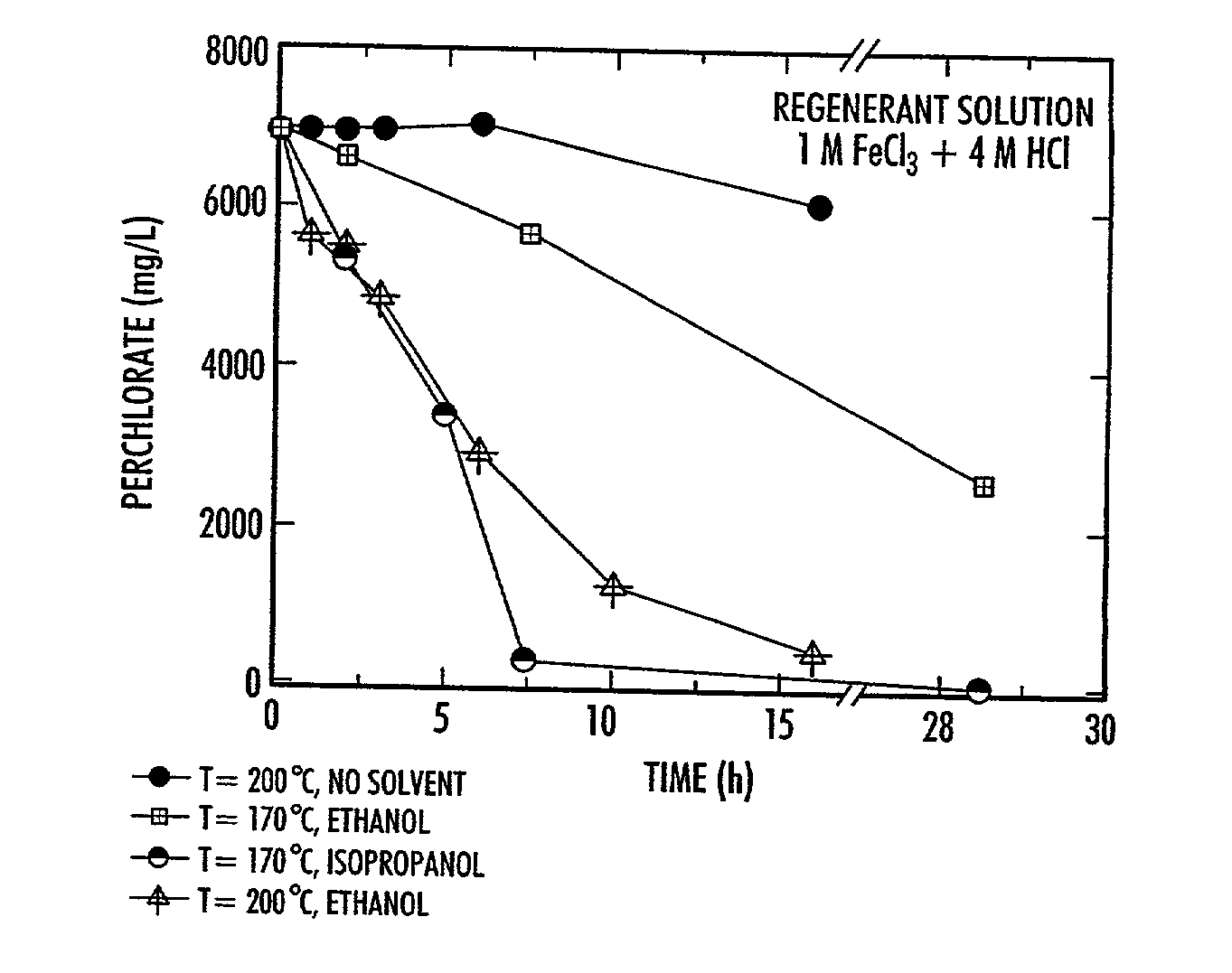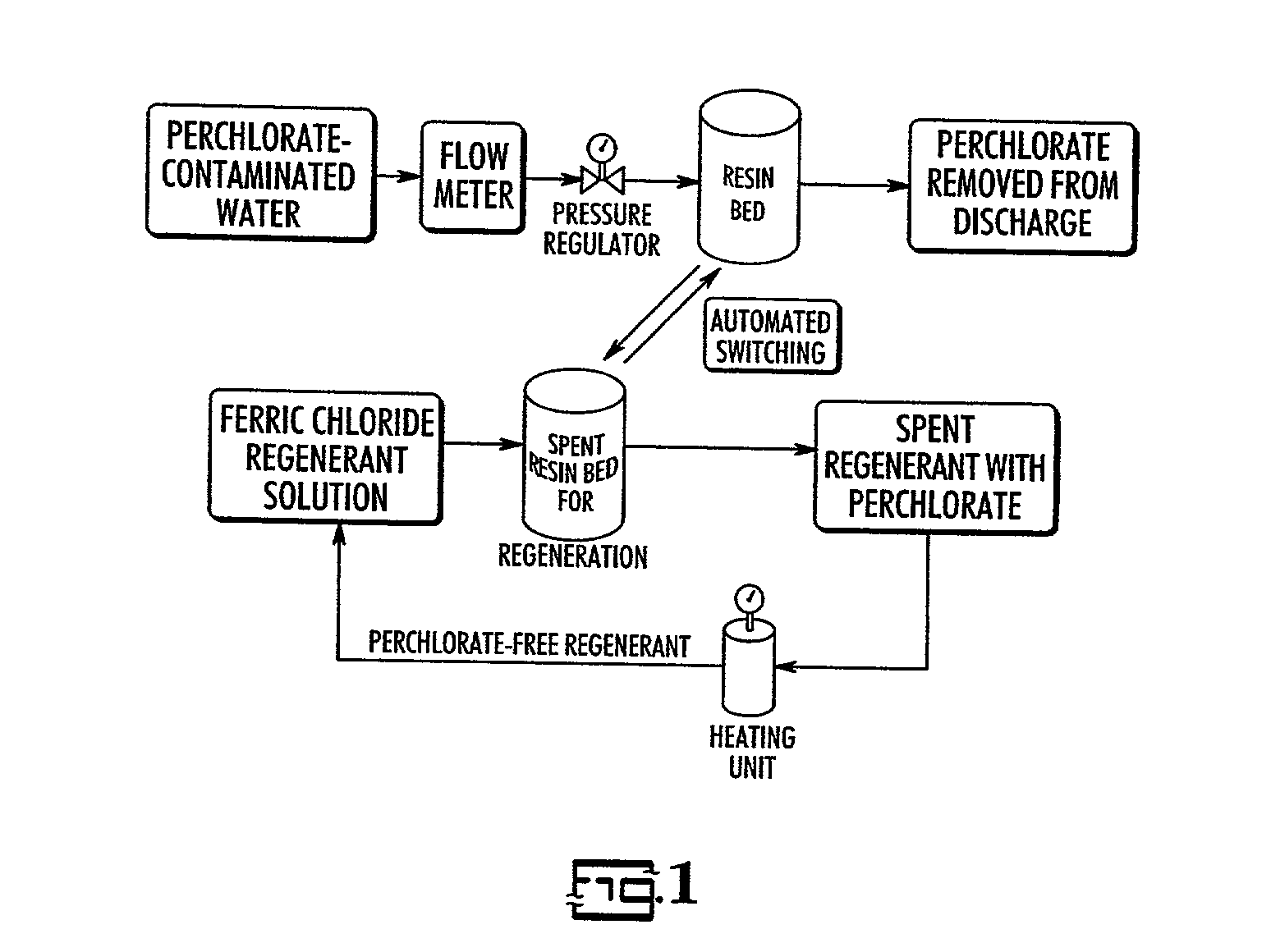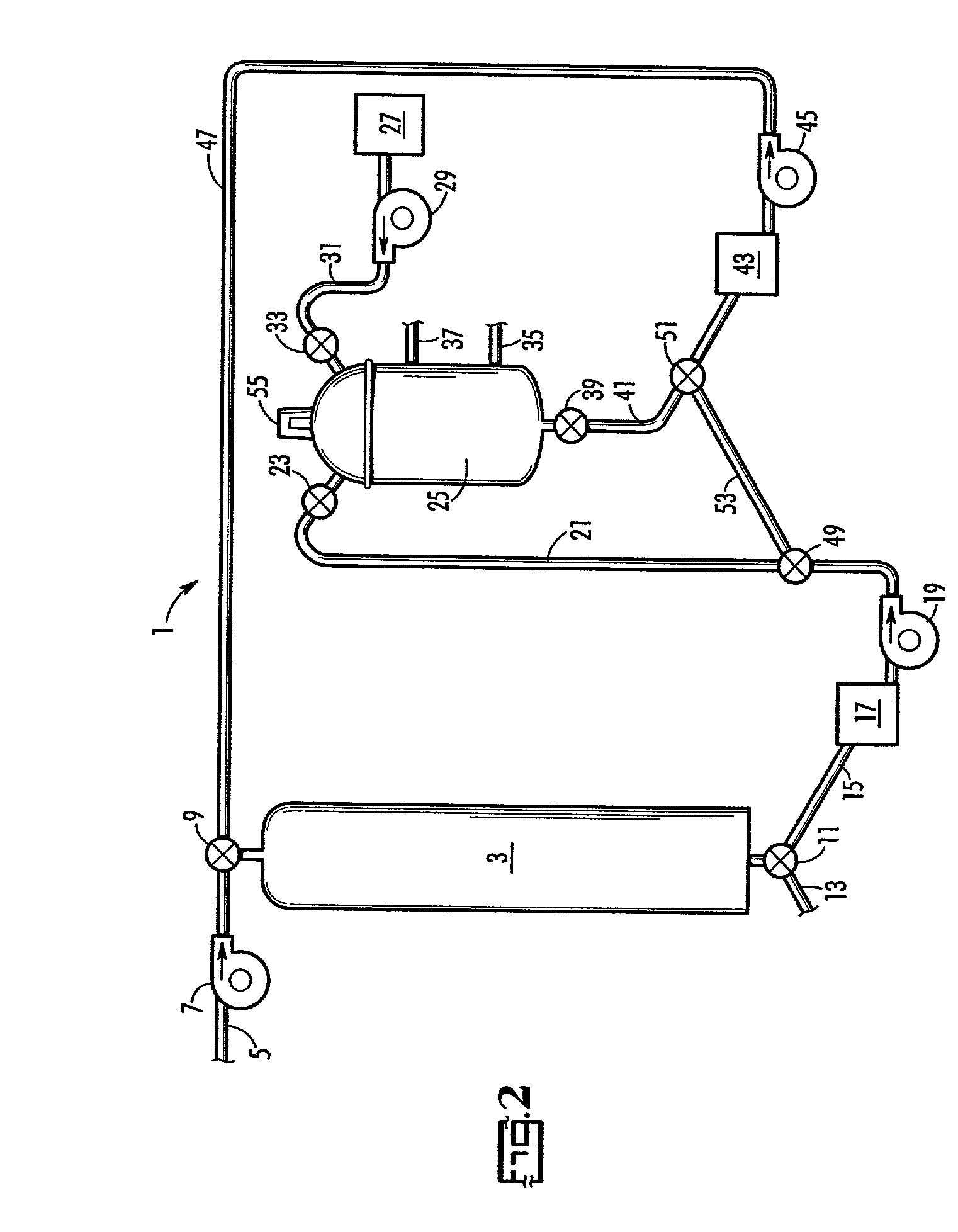Catalytic destruction of perchlorate in ferric chloride and hydrochloric acid solution with control of temperature, pressure and chemical reagents
a technology of hydrochloric acid and perchlorate, which is applied in the direction of ion exchangers, water/sewage treatment by ion exchange, halogen oxide/oxyacids, etc., can solve the problems of significant new threat to groundwater and drinking water supply, inability to effectively remove water by conventional carbon filtration or sedimentation methods or by chemical reduction with reducing agents, and difficulty in regenerating spent resin
- Summary
- Abstract
- Description
- Claims
- Application Information
AI Technical Summary
Problems solved by technology
Method used
Image
Examples
Embodiment Construction
[0035] Samples of spent FeCl.sub.3 / HCl regenerant solution were used for the study. This regenerant solution was obtained from the regeneration of a bifunctional anion exchange resin (Purolite D-3696) which had been used for groundwater treatment of perchlorate at Edwards Air Force Base, Calif. (Disclosed in Gu et al. Remediation, March 2002). The resin is the one described in U.S. Pat. No. 6,059,975 and the regeneration procedure is that described in U.S. patent application Ser. No. 09 / 491,242. Perchlorate concentration in the regenerant solution ranged from .about.6500 to 10,000 mg / L.
[0036] Aliquots of 0.5-10 ml of spent regenerant solution were mixed with an organic solvent at about 0.5 to 3% vol / vol or with ferrous chloride in order to study the relative effectiveness of these organic solvents in destroying perchlorate. These organic solvents included ethanol, isopropanol, citric acid, and acetate. Each mixture was placed either in an acid digestion bomb or in a glass tube. Samp...
PUM
 Login to View More
Login to View More Abstract
Description
Claims
Application Information
 Login to View More
Login to View More - R&D
- Intellectual Property
- Life Sciences
- Materials
- Tech Scout
- Unparalleled Data Quality
- Higher Quality Content
- 60% Fewer Hallucinations
Browse by: Latest US Patents, China's latest patents, Technical Efficacy Thesaurus, Application Domain, Technology Topic, Popular Technical Reports.
© 2025 PatSnap. All rights reserved.Legal|Privacy policy|Modern Slavery Act Transparency Statement|Sitemap|About US| Contact US: help@patsnap.com



